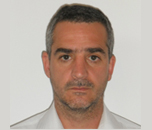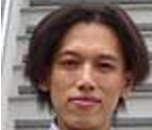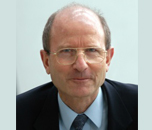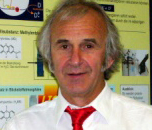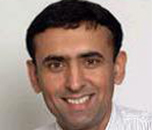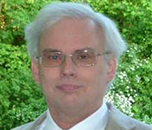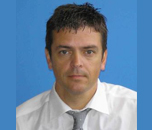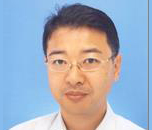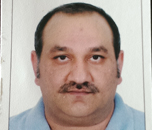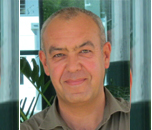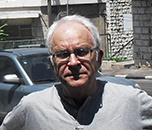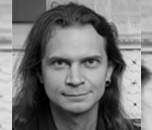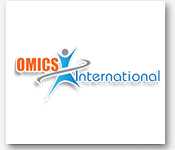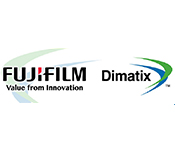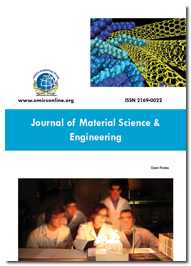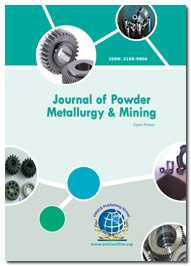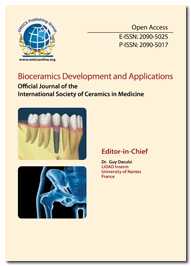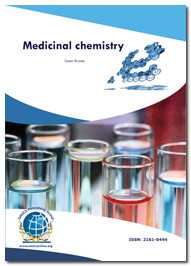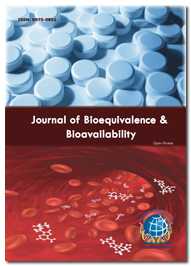Theme: New Paradigm & Novel Access in the Areas of Materials Chemistry
Materials Chemistry 2016
Track 1: Materials Science and Engineering
Material science and engineering, also commonly known as materials science, encompasses the science, engineering and chemical technology of materials and is an integrative subject which gives an idea about the discovery and design of new materials. It deals with studying materials through the materials paradigm (synthesis, structure, properties, and performance). In accordance with chronology, materials are segregated into natural and synthetic and they in turn are divided into inorganic, organic, bulk, micro scale and Nano particles. These various materials exhibit different properties according to their nature. This leads to the advancement in the field of electronics and photonics through basic, potentially transformative materials science research.
Energy materials like photovoltaic cells help in sustaining energy resources. Mining and metallurgical studies involve in the manufacturing processes which convert raw materials into useful products adapted to human needs. It deals with materials-processing, their properties, and their selection and application. Computational Materials Science has a huge scope and calls for hierarchical and multi-scale methods involving modelling, simulation and first-principle calculations on all materials classes.
Optimization processes are particle packing problems, such as how densely hard particles can fill a volume, topology optimization method can be used to determine material microstructures with optimized or targeted properties and the generation of realizations of random heterogeneous materials with specified but limited microstructural information.
Related conferences of Materials Science and Engineering:
6th International Conference and Exhibition on Materials Science and Engineering, September 01-03, 2016 Atlanta, USA; 2nd International Conference and Expo on Smart Materials & Structures, February 29-March 02, 2016 Philadelphia, USA; International Conference on Food Chemistry and Hydrocolloids, August 04-05, 2016 Toronto, Canada; 3rd International Conference on Past and Present Research Systems of Green Chemistry, September 19-21, 2016 Las Vegas, USA; International Conference on Pharmaceutical Chemistry, August 04-06, 2016 Frankfurt, Germany; 18th International Conference on Materials Science and Engineering, January 21-22, 2016 Paris, France; 3rd International Conference on Mining, Material, and Metallurgical Engineering, August 22 - 23, 2016 Budapest, Hungary; 10th International Conference on Energy Sustainability, June 26-30, 2016 North Carolina, USA; 3rd International Conference on Mechanical, Civil and Material Engineering, June 28-30 2016 Bali, Indonesia; Global Conference on Materials Science and Nanotechnology, July 28-29, 2016 Beijing, China. Chemistry Conferences Europe June 16-18, 2016 Rome, Italy
Track 2: Basic Informatics in various fields
The essence of Materials Chemistry can be observed in various fields i.e., organic, inorganic, analytical and physical and biomimetic studies. Organic chemistry provides organic polymers for use in structures, films, fibres, coatings, and so on. It provides materials with complex functionality, a bridge between materials science and medicine and provides a sophisticated synthetic entry into nanomaterial. Inorganic chemistry deals with the structure, properties, and reactions of molecules that do not contain carbon, such as metals. It helps us to understand the behaviour and the characteristics of inorganic materials which can be altered, separated, or used in products, such as ceramics and superconductors. Analytical chemistry determines the structure, composition, and nature of substances, by identifying and analysing their various elements or compounds. It also gives idea about relationships and interactions between the parts of compounds. It has a wide range of applications, like food safety, Nano biopharmaceuticals, and pollution control. The basic characteristics of how matter behaves on a molecular and atomic level and how chemical reactions occur are physical chemistry. Based on the inferences, new theories are developed, such as how complex structures are formed and develop potential uses for new materials correlating materials chemistry. In biomimetic study, the structure and function of biological systems were taken as models and employed in the design and engineering of materials.
Related conferences of Basic Informatics in various fields:
International Conference on Organic Chemistry, August 11-13, 2016 Las Vegas, USA; International Conference on Industrial Chemistry, June 20-21, 2016 New Orleans, USA; 7th International Conference and Exhibition on Analytical & Bioanalytical Techniques, September 29-October 01, 2016 Miami, USA; 5th International Conference on Medicinal Chemistry & Computer Aided Drug Designing, December 01-03, 2016 Chicago, USA; International Conference and Exhibition on Advances in HPLC and Chromatography Techniques, March 17-18, 2016 London, UK; 15th Workshop on Progress in Trace Metal Speciation for Environmental Analytical Chemistry, September 4-7, 2016 Poland, Europe; 18th International Conference on Organic Chemistry, June 27-28, 2016 Copenhagen, Denmark; 23rd International Conference on Physical Organic Chemistry, July 3-8, 2016 Sydney, Australia; 27th International Symposium on Organic Chemistry of Sulfur, July 24-29, 2016 in Jena, Germany; Biomimetic Summit, October 26-28, 2016 Barcelona, Spain
Track 3: Role of Materials chemistry in Pharmacy
Materials science and pharmaceutical chemistry are disciplines at the intersection of chemistry, especially synthetic organic chemistry, and pharmacology and various other biological specialties, where they are involved with design, electrochemical synthesis and development for market of pharmaceutical agents, or bio-active molecules (drugs).
Compounds used as medicines are most often organic compounds, which are often divided into the classes of small organic molecules (e.g., atorvastatin) and "biologics" (erythropoietin, insulin), the latter of which are most often medicinal preparations of proteins (natural and recombinant antibodies, hormones, etc.). Inorganic and organic compounds are also useful as drugs (e.g., lithium and platinum-based agents such as lithium carbonate and cis-platin.
Identification of new drugs, often called "hits", which are typically found by assay of compounds for a desired biological activity. Further synthesis of the formulations needs the analysis of SAR for the desired mechanism of action. If not chemical alterations of excipients in formulations can be done for better effects. Biomaterials are used to treat joint replacements, heart valves, breast implants.
Related conferences of Role of Materials chemistry in Pharmacy:
4th International Conference on Clinical Pharmacy, October 31-November 01, 2016 Las Vegas, USA; International Conference and Expo on Industrial Pharmacy, April 28-29, 2016 Dubai, UAE; International Conference on Pharmaceutical Chemistry, August 04-06, 2016 Frankfurt, Germany; 6th International Conference and Exhibition on Pharmaceutical Regulatory Affairs and IPR, September 12-14, 2016 San Antonio, USA; 5th Global Pharmacists Annual Meeting July 11-13, 2016 Brisbane, Australia; 76th FIP World Congress of Pharmacy and Pharmaceutical Sciences, August 28-September 01, 2016 Buenos Aires, Argentina; 6th FIP Pharmaceutical Sciences World Congress, May 21-24, 2017 Stockholm, Sweden; 7th International Conference on Drug Discovery and Therapy, February 15-18, 2016 Dubai, UAE; World Congress and Expo on Pharmaceutics and Drug Delivery Systems, April 21-23, 2016 Dubai, UAE; 10th World Meeting on Pharmaceutics, Biopharmaceutics and Pharmaceutical Technology, April 4-7, 2016 Glasgow, UK Chemistry Conferences Europe June 16-18, 2016 Rome, Italy
Track 4: Design and Synthesis of Materials
Certain principles are there to synthesize a novel material : to develop an understanding of different materials systems, to know the origins of physical, chemical, and functional properties of different materials, to study basic principles of synthesis and characterization of materials, to understand the origins of functional responses of materials and also the role of materials in science, industry, and technology. Often a pure substance needs to be isolated from a mixture or after chemical reactions (which often give mixtures of chemical substances). From ores, extraction can be done by means of oxidation catalysis and reduction whereas in laboratory by techniques like Hydraulic Washing, Magnetic Separation, Froth Floatation Method, Leaching and so on.
Biomaterials are any matter, surface, or construct either from nature or synthesized in the laboratory and that interacts with biological systems. A ceramic is a non-metallic material composed of inorganic molecules, generally prepared by heating a powder or slurry and glassy materials are hard, brittle, and not crystalline which results in optical transparency. Solid state chemistry, also sometimes referred to as materials chemistry is the study of the synthesis, structure, and properties of solid phase materials, particularly, but not exclusively of, non-molecular solids. Thus it has a strong overlap with solid-state physics, mineralogy, crystallography, ceramics, metallurgy, thermodynamics, materials science and electronics with a focus on the synthesis of novel materials and their characterization. Mixtures of metallic materials are called alloys, are more commonly used than the pure metal. By alloying, some of the key properties of metals can be altered. Composite materials are mixtures of two or more bonded materials. The design and synthesis of these materials with different approaches can be done here.
Related conferences of Design and Synthesis of Materials:
2nd International Conference and Expo on Ceramics and Composite Materials, July 25-27, 2016 Berlin, Germany; Annual Conference and Expo on Biomaterials March 14-16, 2016 London, UK; International Conference on Mining and Metallurgy, June 27-29, 2016 Cape Town, South Africa; 6th International Conference and Exhibition on Materials Science and Engineering, September 01-03, 2016 Atlanta, USA; 2nd International Conference and Expo on Smart Materials & Structures, February 29-March 02, 2016 Philadelphia, USA; Global Conference on Materials Science and Nanotechnology, July 28-29, 2016 Beijing, China; 40th International Conference and Expo on Advanced Ceramics and Composites, January 24-29, 2016 Florida, USA; Ceramics Expo, April 26-28, 2016 Ohio, USA; 6th International Congress on Ceramics, August 21-25, 2016 Dresden, Germany; Advances in Refractory and Reactive Metals and Alloys, January 27-29, 2016 Mumbai, India Chemistry Conferences Europe June 16-18, 2016 Rome, Italy
Track 5: Foundational Challenges in predictive Materials chemistry
Light harvesting is the study of materials and molecules that capture photons of solar light. This includes studies to better understand the light-harvesting properties of photosynthetic organisms. Examples are chlorophylls and carotenoids in plants and man-made solar cells, optical materials and so on. The robust nature of chemical energy storage is embodied in the millennia between the photosynthesis of prehistoric plants, which stored the energy of the sun, and the recovery and combustion of the resulting fossil fuels today, which releases that energy. The challenge for the future is to capture, store, and release energy on an immediate timescale and in a sustainable way. Hence chemical reactions should be controlled for future purpose. Gases and liquids are fluids for us whereas designer fluids are tailored in such a way that these are altered and used in various processes like adsorption and so on for an efficient and clean future energy. This process is also widely applied in case of biochemistry, geochemistry.
Fuel cells, photovoltaic, composites are a few examples of devices and structures in which functionality is achieved by deliberately juxtaposing disparate types of materials, and where the processes that are fundamental to the device performance occur at the interfaces between constituents. The long-term stability of the interfaces between electrodes and separator membranes is essential for sustaining the electrochemical methods responsible for the generation or storage of electric energy in fuel cells or batteries. The key to producing materials systems with the desired performance characteristics is the ability to fabricate them consistently and with Nano scale precision to design specifications. Certain strongly correlated materials are used in case of superconductors in which the behaviour of electrons cannot be described. The density functional approach excels where dynamical correlations are modest in size, which is in the weakly correlated materials. Hence electronic structures should be controlled. By completely performing the solution analysis, one can use it in an effective way analysis for novel and safe ingredients of preparations.
Related conferences of Foundational Challenges in predictive Materials chemistry:
International Conference on Pharmaceutical Chemistry, August 04-06, 2016 Frankfurt, Germany; International Conference on Organic Chemistry, August 11-13, 2016 Las Vegas, USA; International Conference on Industrial Chemistry, June 20-21, 2016 New Orleans, USA; 5th International Conference on Medicinal Chemistry & Computer Aided Drug Designing, December 01-03, 2016 Chicago, USA; International Conference on Past and Present Research Systems of Green Chemistry, September 19-21, 2016 Las Vegas, USA; European Networks Conference On Algal And Plant Photosynthesis, April 26-29, 2016 Qawra, Malta; 10th International Conference on Energy Sustainability, June 26-30, 2016 North Carolina, USA; 18th International Conference on Organic Chemistry, June 27-28, 2016 Copenhagen, Denmark; Challenges in Organic Materials and Supramolecular Chemistry, November 19-21, 2015 Bangalore, India; 27th International Symposium on Organic Chemistry of Sulfur, July 24-29, 2016 in Jena, Germany Chemistry Conferences Europe June 16-18, 2016 Rome, Italy
Track 6: Rational Chemical Synthesis on Nanoscale and Nanostructured materials
Magnetically tunable photonic structures are prepared in alkanol solutions by using silica-modified super paramagnetic Fe3O4 colloids as building blocks. Repulsive electrostatic and magnetically induced attractive forces contribute to the ordering of the Fe3O4 @ SiO2 colloids. The ability to form tunable photonic structures in non-aqueous solutions allows the fabrication of field-responsive polymer composite materials films for potential applications as displays and sensors. Metal-organic frameworks (MOFs) are materials in which metal – to-organic ligand interactions yield porous coordination networks with record-setting surface areas surpassing activated carbons and zeolites. They are used in the storage and separations of gases, catalysis and others. There are two major methods to construct DNA Nano structures, the tile-based and DNA origami methods. The tile-based approach is an ancient method that provides a good tool to construct small and simple structures, usually with multiple repeated domains. In contrast, the origami method, at present, would appear to be more appropriate for the construction of bigger, more sophisticated and defined structures which facilitate molecular modelling.
In the past decade, lithium-ion (Li-ion) batteries have been considered as one of the viable alternative technologies for applications such as electrical vehicles and grid energy storage for renewable energies (e.g., solar and wind) due to their high energy density and long cycle life. Recent nanotechnology leads to the development of advanced electrode materials for high-performance Li-ion batteries. The recent advances are in graphene-based composites and their application as cathode materials for Li-ion batteries. They focus on the synthetic methods of graphene-based composites and their superior electrochemical performance in Li-ion batteries. Advances in oxide semiconductor materials and devices continue to fuel leading edge developments in display technology, and transparent electronics. Nano crystalline oxide semiconductor offers a host of advantages such as low cost and high scalability. In semiconductor device applications, oxide semiconductors stem from a number of attributes primarily their ease of processing, and high field effect mobility, rising in stackable process nature on silicon circuits. Carbon nanotubes (CNTs) are allotropes of carbon with a cylindrical nanostructure. These carbon molecules have unusual properties, which are valuable for nanotechnology, electronics, optics and other fields of materials science and technology. Owing to their extraordinary thermal conductivity and mechanical and electrical technologies, carbon nanotubes act as additives to various structural materials.
Related conferences of Rational Chemical Synthesis on Nanoscale and Nanostructured materials:
6th Global Experts Meeting and Expo on Nanomaterials and Nanotechnology, April 21-23, 2016 Dubai, UAE; International Conference and Exhibition on Nanomedicine and Nanotechnology in Health Care, July 25-27, 2016 Bangkok, Thailand; 11th International Conference and Expo on Nanoscience and Molecular Nanotechnology, September 26-28, 2016 London, UK; International Conference on Industrial Chemistry, June 20-21, 2016 New Orleans, USA; 5th International Conference on Medicinal Chemistry & Computer Aided Drug Designing, December 01-03, 2016 Chicago, USA; 2nd International Symposium on Nanoparticles-Nanomaterials and Applications, January 18-21, 2016 Lisbon, Portugal; International Conference on Nanomedicine, Drug Delivery, and Tissue Engineering, April 1-2, 2016 Prague, Czech Republic; Challenges in Organic Materials and Supramolecular Chemistry, November 19-21, 2015 Bangalore, India; Biopharmaceutics and Pharmaceutical Technology, April 4-7, 2016 Glasgow, UK; 10th International Conference on Energy Sustainability, June 26-30, 2016 North Carolina, USA, Chemistry Conferences Europe June 16-18, 2016 Rome, Italy
Track 7: Study of Polymer Science and Technology
Polymer chemistry is a multidisciplinary science that deals with the chemical synthesis and chemical properties of polymers which were considered as macromolecules. Polymers describe the bulk properties of polymer materials and belong to the field of polymer physics as a subfield of physics. Polymers are of two types-natural ( e.g., rubber, amber ), synthetic ( e.g., polyethylene, nylon, PVC ). Polymerization is the process of combining many small molecules known as monomers into a covalently bonded chain or network. General methods of synthesis include-Biological synthesis and also by modification of natural polymers. Laboratory research is generally divided into two categories, step-growth polymerization and chain-growth polymerization. Polymers are characterized by the presence of monomer units and microstructures and they can be determined by means of many lab techniques. Surface functionalization of a polymer structure is the key component of a coating formulation allowing control over such properties as dispersion, film formation temperature, and the coating rheology. The association of other additives, such as thickeners with adsorbed polymer material give rise to complex rheological behaviour and excellent control over a coating's flow properties.
Polymer blends are members of a class of materials analogous to metal alloys, in which at least two polymers are blended together to create a new material with different physical properties. A polymer alloy includes multiphase copolymers but excludes incompatible polymer blends. These materials combine high modulus, heat resistance and impact strength in addition to flame retardant. Polymer processing is done by extrusion and injection moulding; other processes include calendering, compression. Polymer testing capabilities include advanced trace chemical analysis, diverse analytical capabilities and identification of chemicals composition, unknown materials and chemical contamination. It is used to identify fundamental structural information including molecular weight, molecular weight distribution and information on branching. Polymers are manufactured under pressured conditions, pressureless conditions and so on.
Related conferences of Study of Polymer Science and Technology:
International Conference and Exhibition on Polymer Chemistry, November 14-16, 2016 Atlanta, USA; 4th World Congress on Petrochemistry and Chemical Engineering, December 5-6, 2016 Seattle, USA; International Conference and Exhibition on Marine Drugs and Natural Products, July 28-30, 2016 Melbourne, Australia; 7th International Conference and Exhibition on Analytical & Bioanalytical Techniques, September 29-October 01, 2016 Miami, USA; 2nd International Conference on Genetic and Protein Engineering, November 14-16, 2016 Atlanta, USA; 80th Prague Meeting on Macromolecules-Self-Organization in the World of Polymers, July 10-14, 2016 Prague, Czech Republic; International Workshop on Polymer Reaction Engineering, May 17-20, 2016 Hamburg, Germany; 10th International Conference on Energy Sustainability, June 26-30, 2016 North Carolina, USA; Polymers in Africa 2015, December 9-10, 2016 London, United Kingdom; Polymers in Photovoltaics 2016, February 2-3,2016 Dusseldorf, Germany, Chemistry Conferences Europe June 16-18, 2016 Rome, Italy
Track 8: Applied Materials Chemistry
The effects of ultrasound induce certain physical changes like the dispersal of fillers and other components into base polymers (as in the formulation of paints), the encapsulation of inorganic supplements with polymers, changing of particle size in polymer powders, and most important is the welding and cutting of thermoplastics. In contrast, chemical changes can also be created during ultrasonic irradiation as a result of cavitation, and these effects have been used to favour many areas of polymer chemistry. In materials science, the sol-gel conversion is a method for producing solid materials from small molecules. This method is used for the fabrication of metal oxides particularly the oxides of silicon and titanium. The process involves conversion of monomers into a colloidal solution (sol) that acts as the precursor for an integrated network (or gel) of either discrete particles or network polymers. Important precursors are metal alkoxides. Polymers produced under sonication had narrower poly dispersities but higher molecular weights than those produced under normal conditions. The fastness of the polymerization was caused by more efficient dispersion of the catalyst throughout the monomer, leading to a more homogeneous reaction and hence a lower distribution of chain lengths. The electrical and magnetic phenomena alter the properties of materials for better prospective in manufacturing. Plastic fabrication is the design, manufacture and assembly of plastic products through one of a number of methods.
Related conferences of Applied Materials Chemistry:
2nd International Congress and Expo on Biofuels and Bioenergy, September 01-03, 2016 Sao Paulo, Brazil; Global Summit and Expo on Biomass, October 10-12, 2016 Dubai, UAE; 2nd International Conference on Current Trends in Mass Spectrometry, May 09-11, 2016 Chicago, USA; 5th International Conference on Medicinal Chemistry & Computer Aided Drug Designing, December 01-03, 2016 Chicago, USA; International Conference on Mining and Metallurgy, June 27-29, 2016 Cape Town, South Africa; Plastic Pipes in Infrastructure 2016, April 19-21, 2016 London, United Kingdom; International Conference on Fatigue Damage of Structural Materials XI, September 18-24, 2016 Hyannis, United States; Advances in Refractory and Reactive Metals and Alloys, January 27-29, 2016 Mumbai, India; International Workshop on Polymer Reaction Engineering, May 17-20, 2016 Hamburg, Germany; 3rd International Conference on Mechanical, Civil and Material Engineering, June 28-30 2016 Bali, Indonesia, Chemistry Conferences Europe June 16-18, 2016 Rome, Italy
Track 9: Current Innovations and Emerging Areas
Nanostructures deal with objects and structures that are in the 1—100 nm range. In many materials, atoms or molecules cluster together to form objects at the nanoscale. This leads to interesting electromagnetic, optical and mechanical properties. The term 'nanostructure' is often used when referring to magnetic technology. Microstructure is defined as the structure of a prepared surface or thin foil of material as revealed by a microscope above 25× magnification. It deals with objects from 100 nm to a few cm. Most of the traditional materials (such as metals and ceramics) are micro structured. Macrostructure is the appearance of a material in the scale millimetres to meters—it is the structure of the material as seen with the naked eye. Atomic structure deals with the atoms of the materials and how they are arranged to give structure of molecules, crystalline solids etc., The length scales involved are in angstroms (0.1 nm). The way in which the atoms and molecules are bonded and arranged is fundamental to studying the properties and behaviour of any material. Crystallography is the science that examines the arrangement of atoms in crystalline solids. Crystallography is very much useful for materials scientists. Polymers display varying degrees of crystallinity and many are completely non-crystalline. Glass, some ceramics, and many natural materials are amorphous, not possessing any long-range order in their atomic nuclei.
Related conferences of Current Innovations and Emerging areas:
4th International Conference on Bioprocess and Biosystems Engineering, October 20-21, 2016 Houston, USA; 3rd Biomedical Engineering Conference and Expo, September 22-23, 2016 Vienna, Austria; World Congress On Petroleum and Refinery, July 21-23, 2016 Brisbane, Australia; Global Summit on Herbals and Natural Remedies October 26-27, 2015 Chicago, USA; 6th International Conference and Exhibition on Pharmaceutical Regulatory Affairs and IPR, September 12-14, 2016 San Antonio, USA; 1st TMS Summit on Integrated Manufacturing and Materials Innovations, November 15-18, 2015 Pittsburgh, United States; 16th International Conference on Atomic Layer Deposition, July 24-27, 2016 Dublin, Ireland; Asian Crystallographic Association Meeting, December 5-8, 2015 Kolkata, India; International Conference on Fatigue Damage of Structural Materials XI, September 18-24, 2016 Hyannis, United States; 3rd International Conference on Mechanical, Civil and Material Engineering, June 28-30 2016 Bali, Indonesia, Chemistry Conferences Europe June 16-18, 2016 Rome, Italy
Track 10: Research Aspects
Surface science is the study of physical and chemical phenomena that occur at the interface of two phases along with solid–liquid interfaces, solid–gas interfaces, solid–vacuum interfaces, and liquid–gas interfaces. It is closely related to study of surface, which targets at modifying the chemical composition of a surface by incorporation of selected elements or functional groups that produce various desired effects or improvements in the properties of the surface or interface. Biomedical materials are prepared from tissue engineering for the compatibility in the human body. Optoelectronics is the study and application of electronic devices that source, detect and control light, usually considered as a sub-field of photonics. These devices are electrical-to-optical or optical-to-electrical transducers, or instruments that use such devices in their operation. It is based on the quantum mechanical effects of light on electronic materials, especially semiconductors, occasionally in the presence of electric fields. Superconductivity is a phenomenon of exactly zero electrical resistance and expulsion of magnetic fields occurring in certain materials when cooled below a characteristic critical temperature. Superconducting materials are some of the most powerful electromagnets known. They are used in MRI/NMR machines, mass spectrometers, and beam-steering magnets used in particle accelerators. Molecular electronics is the study and application of molecular building blocks for the fabrication of electronic materials.
Related conferences of Research aspects:
6th International Conference and Exhibition on Materials Science and Engineering, September 01-03, 2016 Atlanta, USA; International Conference and Exhibition on Marine Drugs and Natural Products, July 28-30, 2016 Melbourne, Australia; International Conference on Food Chemistry and Hydrocolloids, August 04-05, 2016 Toronto, Canada; 2nd International Conference and Expo on Ceramics and Composite Materials, July 25-27, 2016 Berlin, Germany; 3rd International Conference on Past and Present Research Systems of Green Chemistry, September 19-21, 2016 Las Vegas, USA; 18th International Conference on Organic Chemistry, June 27-28, 2016 Copenhagen, Denmark; Advances in Refractory and Reactive Metals and Alloys, January 27-29, 2016 Mumbai, India; 10th International Conference on Energy Sustainability, June 26-30, 2016 North Carolina, USA; 4th International Conference on Nano and Materials Science, January 7-9, 2016 Chengd, China; Carbon Dioxide Catalysis Conference, April 19-22, 2016 Carvoeiro, Algarve, Portugal, Chemistry Conferences Europe June 16-18, 2016 Rome, Italy
Track 11: Science of Advanced Materials
Two-dimensional (2D) materials have attracted much attention in the past decade. They have high specific surface area and also electronic engineering and properties that differ from their bulk counterparts due to the low dimensionality. Graphene is the best known and the most studied 2D material, but metal oxides and hydroxides (including clays), dichalcogenides, boron nitride (BN), and other materials that are one or several atoms thick are receiving increasing attention. They exhibit a combination of properties that cannot be provided by other materials. Many two-dimensional materials are synthesized by selective extraction process which is critically important when the bonds between the building blocks of the material are too strong (e.g., in carbides) to be broken mechanically in order to form Nano structures. These have a thickness of a few nanometres or less. Electrons are free to move in the two-dimensional plane, but their restricted motion in the third direction is governed by quantum mechanics. Magnetic topological insulator comprised of two-dimensional (2-D) materials has a potential of providing many interests and applications by manipulating the surfaces states like yielding quantum anomalous Hall effect giving rise to dissipation-less chiral edge current, giving axion electromagnetism and others. The chemistry of electrical, optical, thermal and mechanical properties varies in a peculiar style and these materials are applied widely in case of ambipolar electronics, transistors and so on.
Related conferences of Science of Advanced Materials:
International Conference on Industrial Chemistry, June 20-21, 2016 New Orleans, USA; 2nd International Conference and Expo on Ceramics and Composite Materials, July 25-27, 2016 Berlin, Germany; Annual Conference and Expo on Biomaterials March 14-16, 2016 London, UK; International Conference on Pharmaceutical Chemistry, August 04-06, 2016 Frankfurt, Germany; International Conference and Exhibition on Advances in HPLC and Chromatography Techniques, March 17-18, 2016 London, UK; International Conference on Fatigue Damage of Structural Materials XI, September 18-24, 2016 Hyannis, United States; 3rd International Conference on Mechanical, Civil and Material Engineering, June 28-30 2016 Bali, Indonesia; Challenges in Organic Materials and Supramolecular Chemistry, November 19-21, 2015 Bangalore, India; 6th International Conference on Advanced Materials Research, January 22-24, 2016 Torino, Italy; Advanced Materials in Technology and Construction, October 6 - 9, 2015 Tomsk, Russia, Chemistry Conferences Europe June 16-18, 2016 Rome, Italy
Chemistry Conferences of OMICS International Conferences welcomes professional chemists, researchers, professors, scientific communities, delegates, students, business professionals and executives from all over the world to attend the “International Conference and Exhibition on Materials Chemistry” which is to be held during March 31-April 01, 2016 at Valencia, Spain which includes prompt keynote presentations, Oral talks, Poster presentations and Exhibitions.
Materials Chemistry 2016 which is one of the chemistry conferences a global platform to discuss and learn about Material Science, Material Engineering, pharmaceutical materials chemistry, biomimetic chemistry, synthesis, characterization and processing of novel materials, nanochemistry, applied materials chemistry, super conducting concepts, polymer chemistry, inorganic materials chemistry, organic materials chemistry, analytical materials chemistry, physical materials chemistry and other basic principles involved in Materials Chemistry.
In the light of this theme, the conference series aims to provide a forum for international researchers from various areas of chemistry, pharmacy, materials science and chemical engineering by providing a platform for critical analysis of new data, and to share latest cutting-edge research findings and results about all aspects of Materials Chemistry. The current meeting of chemistry conferences will be a multidisciplinary gathering and present major areas such as surface enhancement, nanotechnology, polymer science and overall applications.
Target Audience:
Materials Chemists
Professors in Chemistry
Associate and Assistant Professors in Materials Chemistry
Post doctorals and Researchers in Chemistry
Heads of Chemical Departments
Post Graduates and Graduates in Materials Chemistry
Laboratory Chemists
Chemical Scientists working on Materials
Experts in the development of Nanostructures
The forecast for R&D growth in the chemical and advanced materials industry reflects the improving global economy and the key markets the industry serves. U.S. R&D spending in chemicals and advanced materials is forecast to grow by 3.6% to reach $12 billion in 2014. Overall global R&D is forecast to grow at a slightly higher 4.7% rate to $45 billion in 2014.The R&D activities within the chemical and advanced materials industry reflects improvements in the U.S. and global economy, and the role this industry plays in support of other demand-driven industries. We forecast U.S. chemical and advanced materials R&D to increase by 3.6% in 2014, reaching $12.2 billion. Worldwide R&D is expected to increase by 4.7% to $45.3 billion.
OMICS International organizes 1000+ Global events every year across the globe with support from 1000+ more scientific societies and Publishes 700 Open access journals which contains over 50000 eminent personalities, reputed scientists as editorial board members.
The term Materials Chemistry covers various chemical sciences such as inorganic, organic, physical and chemical engineering in which information about the scope of the newly emerging discipline of materials was assembled, collated, and disseminated leading to an authoritative definition of the subject. However the presence of “chemistry” indicates the design, synthesis, processing and utilization of materials. The objective was not so much to produce lists of specific topics or categories of compounds and phenomena, which would quickly become out of date, but to establish some principles that could be deployed by IUPAC and the chemical community. It was recently established that materials with completely new properties can be made using nanoscale manipulation. This poses a major challenge to basic research, but nanoeffects also provide interesting perspectives for new industrial processes and applications. In general, emphasis is placed on the interdisciplinary nature of materials science and issues at the forefront of the field, such as energy and environmental issues, as well as medical and bioengineering applications.
Materials scientists and engineers work in materials process engineering, research and development, quality, technical support, management, technical sales and marketing, and more. Employers range from primary material producers and refiners to utility providers, the transport industry, the defence force, universities, research institutions and multinational technical consultancy firms. There are a multitude of opportunities for scientific and commercial endeavour in the areas of forensics, bio-materials, electronic devices, nano-materials, the environment as well as new and innovative materials and processes.
Why it’s in Valencia, Spain:
The chemical sector has become the second largest exporter within the Spanish economy. It is one of the basic pillars of the Spanish economy, and is made up of more than 3,300 companies. Spain was the fifth largest producer in Europe (after Germany, France, Italy and the United Kingdom), accumulating 7% of European business and 2% of international trade.
The good performance of the Spanish chemical industry over the past 30 years has also seen a progressive move towards products with greater added value. By sub-sector, pharmaceutical products account for 25% of the total, followed by plastic and rubber raw materials (15%). Also significant are organic chemicals, detergents and cleaning products, which all account for more than (9%), and paints and inks, pharmaceutical raw materials and perfumes and cosmetics, all of which account for more than 5%.
Valencia stood third generating 8% of total Spanish chemical sales. It is an active industrial and commercial center producing textiles, metal products, chemicals, automobiles and so on.
Why to attend:
To have a broader view on the materials used in case of manufacturing different chemicals, pharmaceuticals, and the innovative methods employed for their development and processing in various fields of materials science. The current conference also deals with the advanced technologies like nanostructures, microstructures which distends the growth in formulating new medicines thereby promoting healthcare. It not only gives an idea on the materials but also creates a unique approach towards novel strategies.
Spanish Market value on Materials Chemistry:
The chemical sector has become the second largest exporter within the Spanish economy. In 2010, exports exceeded €25 billion, 24% more than in 2009, when sales to foreign markets already accounted for more than 40% of revenues. This industry is also a leader in R&D +I investments and environmental protection, accounting for 20% of national investments in this field. Companies based in Catalonia generate 44% of the country’s total chemicals sales, followed by Madrid (16%), Valencia (8%), Andalusia (8%) and the Basque Country (4%).
Global Market Value on Materials Chemistry:
World chemicals turnover was valued at €3,156 billion in 2013. This marks a slow recovery of the chemical industry compared with 2012. Global sales grew by 2.4 per cent from €3,084 billion in 2012 to €3,156 billion in 2013.The sales growth rate was considerably lower compared to the 10 year trend, when average annual sales expanded by 10.3 per cent from 2003 to 2012.World chemicals sales in 2013 grew by nearly €73 billion compared with 2012, marking a modest recovery in the world chemical industry.
Major Chemical Societies in Spain:
National Association of Chemists of Spain
Spanish Royal Society of Chemistry
Spanish Society of Biochemistry and Molecular Biology
Spanish Catalysis Society
Spanish Society of Mass Spectrometry
Analytica Spanish Society of Chemistry
Catalan Chemistry Society
Major International Chemistry Associations:
Cooperation on International Traceability in Analytical Chemistry
Electrochemical Society
European Association for Chemical and Molecular Sciences
European Colloid and Interface Society
European Federation for Medicinal Chemistry
European Federation of Chemical Engineering
European Precious Metals Federation
Federation of Asian Chemical Societies
International Association of Catalysis Societies
International Association of Nanotechnology
For more information about Materials Chemistry Market Analysis PS: Materials Chemistry Market Analysis
Conference Highlights
- Materials Science and Engineering
- Informatics in various fields of Materials
- Role of Materials chemistry in Pharmacy
- Design and Synthesis of Materials
- Foundational Challenges in predictive Materials chemistry
- Rational Chemical Synthesis on Nanoscale and Nanostructured materials
- Polymer Materials and their technology
- Applied Materials Chemistry
- Current Innovations and Emerging areas in Materials Chemistry
- Research aspects of Materials Chemistry
- Science of Advanced Materials
To share your views and research, please click here to register for the Conference.
To Collaborate Scientific Professionals around the World
| Conference Date | March 30-31, 2016 | ||
| Sponsors & Exhibitors |
|
||
| Speaker Opportunity Closed | Day 1 | Day 2 | |
| Poster Opportunity Closed | Click Here to View | ||
Useful Links
Special Issues
All accepted abstracts will be published in respective Our International Journals.
- Journal of Material Sciences & Engineering
- Journal of Powder Metallurgy & Mining
- Bioceramics Development and Applications
Abstracts will be provided with Digital Object Identifier by








